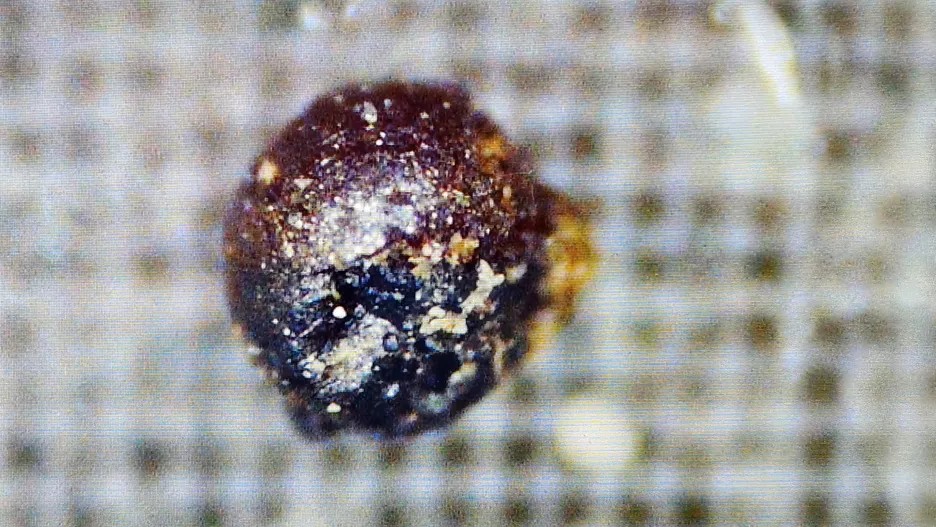Seismic reading linked to 'alien technology' by Harvard professor likely came from a passing truck, study claims
Avi Loeb has suggested that metallic spherules found at the bottom of the Pacific Ocean could have alien origins. But a new study suggests he may have been misled by a seismometer that picked up the rumbles of a passing truck.

Another study has cast doubt on a Harvard professor's claim that he discovered tiny metallic balls made by aliens at the bottom of the Pacific Ocean.
In 2023, Avi Loeb, director of Harvard University's computational astrophysics center, claimed he had found several metallic spherules left behind by a meteor that exploded over the Western Pacific Ocean in 2014 and that their strange composition "may reflect an extraterrestrial technological origin."
Scientists quickly pushed back at Loeb's assertions — which he made prior to publishing any peer-reviewed research on the spheres — saying that he lacked evidence to back them up and that several studies indicated the spheres likely came from human-made pollution.
Related: 'Oumuamua isn't an alien spaceship — it's a rock that's farting hydrogen, new study suggests
Now, a new study that will be presented Tuesday (March 12) at the Lunar and Planetary Science Conference in The Woodlands, Texas, has added more fuel to critics' skepticism. It claims that a seismometer first thought by Loeb and his colleagues to record the meteor's fiery passage may have instead picked up a rumble from a passing truck, disastrously misleading the researchers in their hunt for the meteor's remnants.
"The fireball location was actually very far away from where the oceanographic expedition went to retrieve these meteor fragments," lead author Benjamin Fernando, a planetary seismologist at Johns Hopkins University, said in a statement. "Not only did they use the wrong signal, they were looking in the wrong place."
Loeb and his team first found the meteor in 2019, after scouring databases for space rocks that had arrived at Earth via unusual trajectories. Dubbed IM1 after its discovery, the meteor appeared to be moving too fast to have come from within our solar system, leading Loeb to wonder if it was a probe from an alien spacecraft.
Sign up for the Live Science daily newsletter now
Get the world’s most fascinating discoveries delivered straight to your inbox.
Loeb turned to readings from a seismometer that appeared to track the meteor's fiery descent — placing it within a 6-square-mile (16 square kilometers) area of coast just off Papua New Guinea's Manus Island. There, Loeb found 805 microscopic spherules, a fraction of which contained unusual elements that could indicate they originated from outside the solar system, according to the team's analysis.
But after analyzing the signal Loeb used, Fernando said it's much more likely it came from a passing truck than an alien spacecraft or interstellar meteor.
"The signal changed directions over time, exactly matching a road that runs past the seismometer," Fernando said. "It's really difficult to take a signal and confirm it is not from something. But what we can do is show that there are lots of signals like this, and show they have all the characteristics we'd expect from a truck and none of the characteristics we'd expect from a meteor."
Taking data from stations in Australia and Palau designed to detect the sounds made by nuclear tests, the researchers suggested that the location Loeb and his team should have investigated was 100 miles (160 kilometers) from the site they chose. As for the spherules they found, the new study claims they likely came from ordinary meteorites hitting Earth.
"Whatever was found on the seafloor is totally unrelated to this meteor, regardless of whether it was a natural space rock or a piece of alien spacecraft — even though we strongly suspect that it wasn't aliens," Fernando said.
Loeb has doubled down in response, writing in a post on Medium that the team used the seismometer data only after finding their search region and that the main indicators they used were sensors installed by the U.S. Department of Defense (DOD).
"The astronomers who dismiss the DoD data and argue that it must be entirely wrong should lose sleep at night because their mistrust implies that their safety is not secured and their taxes are wasted on an unreliable national security infrastructure," Loeb wrote.

Ben Turner is a U.K. based staff writer at Live Science. He covers physics and astronomy, among other topics like tech and climate change. He graduated from University College London with a degree in particle physics before training as a journalist. When he's not writing, Ben enjoys reading literature, playing the guitar and embarrassing himself with chess.









